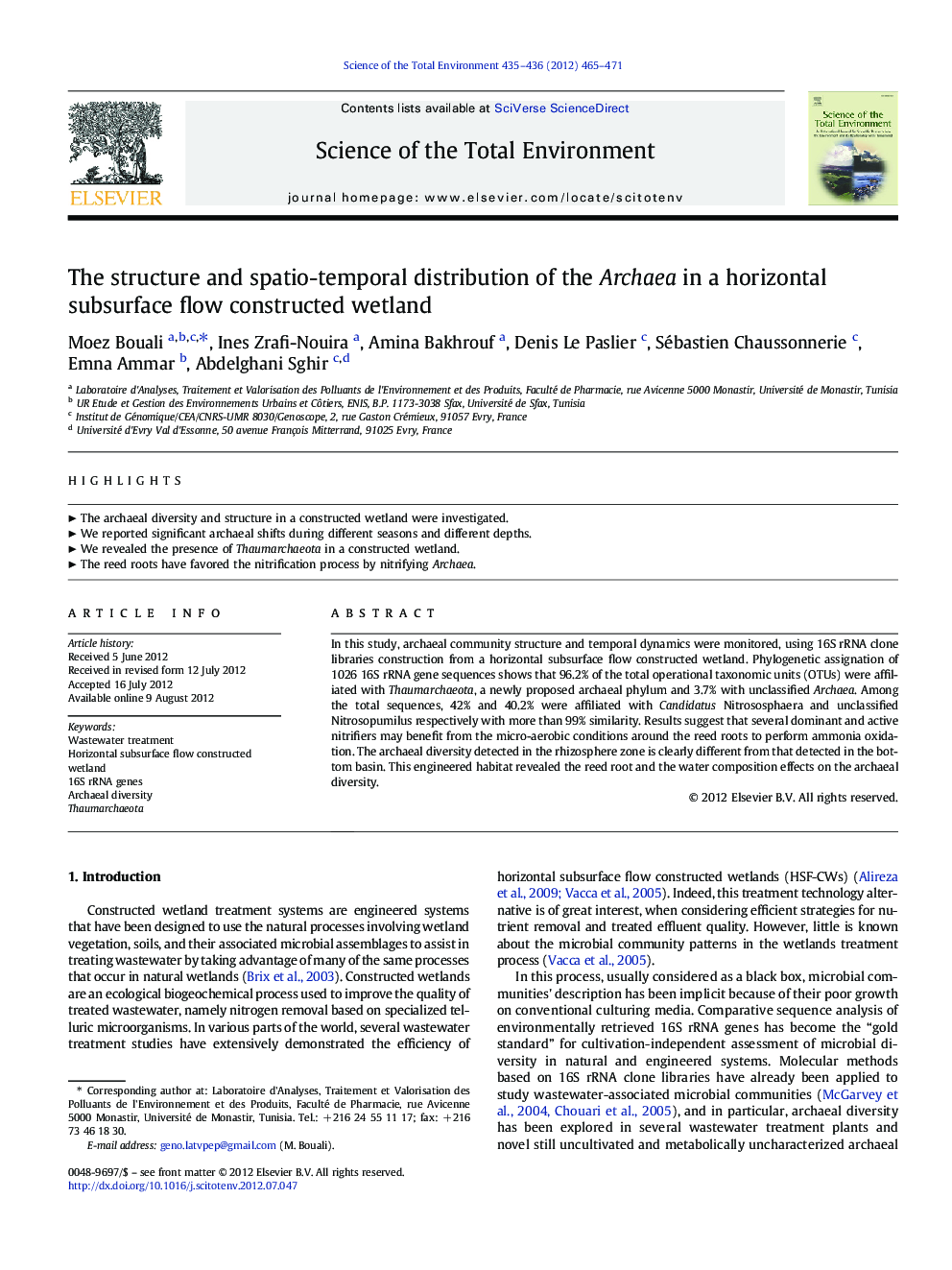| Article ID | Journal | Published Year | Pages | File Type |
|---|---|---|---|---|
| 4429255 | Science of The Total Environment | 2012 | 7 Pages |
In this study, archaeal community structure and temporal dynamics were monitored, using 16S rRNA clone libraries construction from a horizontal subsurface flow constructed wetland. Phylogenetic assignation of 1026 16S rRNA gene sequences shows that 96.2% of the total operational taxonomic units (OTUs) were affiliated with Thaumarchaeota, a newly proposed archaeal phylum and 3.7% with unclassified Archaea. Among the total sequences, 42% and 40.2% were affiliated with Candidatus Nitrososphaera and unclassified Nitrosopumilus respectively with more than 99% similarity. Results suggest that several dominant and active nitrifiers may benefit from the micro-aerobic conditions around the reed roots to perform ammonia oxidation. The archaeal diversity detected in the rhizosphere zone is clearly different from that detected in the bottom basin. This engineered habitat revealed the reed root and the water composition effects on the archaeal diversity.
► The archaeal diversity and structure in a constructed wetland were investigated. ► We reported significant archaeal shifts during different seasons and different depths. ► We revealed the presence of Thaumarchaeota in a constructed wetland. ► The reed roots have favored the nitrification process by nitrifying Archaea.
